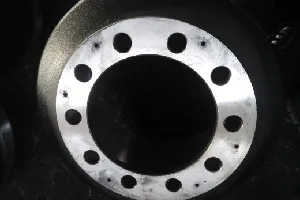
-
 Afrikaans
Afrikaans -
 Albanian
Albanian -
 Amharic
Amharic -
 Arabic
Arabic -
 Armenian
Armenian -
 Azerbaijani
Azerbaijani -
 Basque
Basque -
 Belarusian
Belarusian -
 Bengali
Bengali -
 Bosnian
Bosnian -
 Bulgarian
Bulgarian -
 Catalan
Catalan -
 Cebuano
Cebuano -
 Corsican
Corsican -
 Croatian
Croatian -
 Czech
Czech -
 Danish
Danish -
 Dutch
Dutch -
 English
English -
 Esperanto
Esperanto -
 Estonian
Estonian -
 Finnish
Finnish -
 French
French -
 Frisian
Frisian -
 Galician
Galician -
 Georgian
Georgian -
 German
German -
 Greek
Greek -
 Gujarati
Gujarati -
 Haitian Creole
Haitian Creole -
 hausa
hausa -
 hawaiian
hawaiian -
 Hebrew
Hebrew -
 Hindi
Hindi -
 Miao
Miao -
 Hungarian
Hungarian -
 Icelandic
Icelandic -
 igbo
igbo -
 Indonesian
Indonesian -
 irish
irish -
 Italian
Italian -
 Japanese
Japanese -
 Javanese
Javanese -
 Kannada
Kannada -
 kazakh
kazakh -
 Khmer
Khmer -
 Rwandese
Rwandese -
 Korean
Korean -
 Kurdish
Kurdish -
 Kyrgyz
Kyrgyz -
 Lao
Lao -
 Latin
Latin -
 Latvian
Latvian -
 Lithuanian
Lithuanian -
 Luxembourgish
Luxembourgish -
 Macedonian
Macedonian -
 Malgashi
Malgashi -
 Malay
Malay -
 Malayalam
Malayalam -
 Maltese
Maltese -
 Maori
Maori -
 Marathi
Marathi -
 Mongolian
Mongolian -
 Myanmar
Myanmar -
 Nepali
Nepali -
 Norwegian
Norwegian -
 Norwegian
Norwegian -
 Occitan
Occitan -
 Pashto
Pashto -
 Persian
Persian -
 Polish
Polish -
 Portuguese
Portuguese -
 Punjabi
Punjabi -
 Romanian
Romanian -
 Russian
Russian -
 Samoan
Samoan -
 Scottish Gaelic
Scottish Gaelic -
 Serbian
Serbian -
 Sesotho
Sesotho -
 Shona
Shona -
 Sindhi
Sindhi -
 Sinhala
Sinhala -
 Slovak
Slovak -
 Slovenian
Slovenian -
 Somali
Somali -
 Spanish
Spanish -
 Sundanese
Sundanese -
 Swahili
Swahili -
 Swedish
Swedish -
 Tagalog
Tagalog -
 Tajik
Tajik -
 Tamil
Tamil -
 Tatar
Tatar -
 Telugu
Telugu -
 Thai
Thai -
 Turkish
Turkish -
 Turkmen
Turkmen -
 Ukrainian
Ukrainian -
 Urdu
Urdu -
 Uighur
Uighur -
 Uzbek
Uzbek -
 Vietnamese
Vietnamese -
 Welsh
Welsh -
 Bantu
Bantu -
 Yiddish
Yiddish -
 Yoruba
Yoruba -
 Zulu
Zulu
9 brake drum
Understanding the 9% Brake Drum Performance and Advantages
Brake drums play a crucial role in the braking system of vehicles, ensuring safety and performance during operation. In the realm of automotive parts, the term 9% brake drum has emerged, referring to a specific design or specification that can enhance the braking efficiency compared to traditional drums. This article will delve into the importance of brake drums, the significance of the 9% brake drum, and its advantages in vehicular performance.
The Role of Brake Drums
Brake drums are critical components within a drum brake system, which utilizes friction to slow down or stop the vehicle. When the driver applies the brakes, brake shoes press against the inner surface of the rotating drum, creating friction that ultimately brings the vehicle to a halt. This design is commonly found in older vehicles and is still prevalent in certain applications today, particularly in heavier vehicles like trucks and buses.
Efficient braking is vital for ensuring safety on the roads, making the performance of brake drums a top priority for manufacturers and consumers alike. However, traditional brake drums can have their limitations, especially in high-performance or heavy-duty scenarios where heat generation and wear can compromise effectiveness.
What is a 9% Brake Drum?
The term 9% brake drum typically refers to a design that improves the performance metrics of standard brake drums by approximately 9%. This enhancement can arise from various factors, including the material composition, design modifications, or technological advancements in manufacturing processes. The goal of developing a 9% brake drum is to create a product that offers better heat dissipation, reduced weight, and increased durability, therefore allowing for more efficient braking performance.
9 brake drum

Advantages of the 9% Brake Drum
1. Improved Heat Management One of the most significant advantages of the 9% brake drum design is its enhanced heat dissipation properties. Excessive heat during braking can lead to brake fade, where the brakes become less effective due to overheating. A better-designed drum can help maintain optimal temperatures, ensuring consistent braking performance.
2. Reduced Weight A lighter brake drum can contribute to an overall reduction in vehicle weight, which can improve fuel efficiency and handling. Lighter components mean that the vehicle requires less energy to move, making it more economical and environmentally friendly.
3. Enhanced Durability The materials and design improvements associated with the 9% brake drum often lead to increased durability. This means that the brake drums can withstand greater stress and wear, resulting in a longer lifespan and less frequent replacements. This can save vehicle owners money in the long run and reduce waste.
4. Better Performance With improved heat management, reduced weight, and enhanced durability, the overall performance of the braking system can see a significant upgrade. Drivers can expect quicker response times and better handling under various driving conditions, which is particularly important for performance cars or those used in challenging environments.
Conclusion
The development of the 9% brake drum represents a significant advancement in automotive braking technology. By focusing on improved heat management, reduced weight, and enhanced durability, these brake drums ensure safer and more efficient braking performance. As vehicle technology continues to evolve, innovations like the 9% brake drum will play a vital role in meeting the demands of modern drivers, enhancing both safety and performance on the road.
-
Rear Drum Brakes Maintenance TipsNewsAug.04,2025
-
Key Components Affecting Brake Drum FunctionNewsAug.04,2025
-
Important Inspection for Truck Drum BrakeNewsAug.04,2025
-
How to Prepare for Changing Rear Drum BrakesNewsAug.04,2025
-
Essential Tools for Cleaning Drum Brakes ProperlyNewsAug.04,2025
-
Brake Drum Function GuideNewsAug.04,2025
-
Safety Features of Red Brake DrumsNewsAug.01,2025
